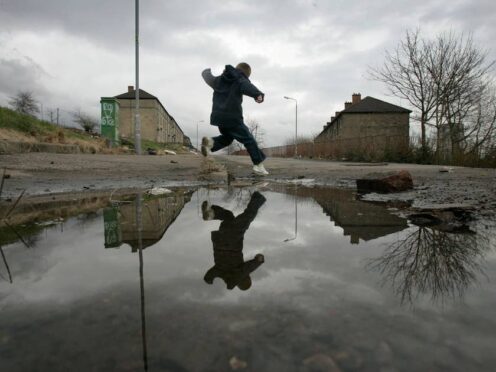A Scottish Government claim about child poverty could lead to potential confusion, the head of the UK Statistics Authority (UKSA) has said.
Modelling by the Scottish Government earlier this year estimated 100,000 children had been kept from falling into relative poverty by policies it has enacted, such as the Scottish child payment.
But some ministers – including First Minister John Swinney and his predecessor Humza Yousaf – have claimed policies enacted by the Government are actively reducing the number of children in poverty.
In fact, the number of children in relative poverty since the SNP took office in 2007 has remained roughly stable, with the most recent figures estimating 240,000 are in the category.
Today we have responded to Paul O’Kane MSP about Scottish Government child poverty statistics. https://t.co/uDc1azwiF0 pic.twitter.com/KAonHNOYz4
— UK Statistics Authority (@UKStatsAuth) June 25, 2024
Scottish Labour’s Paul O’Kane reported the claims to the UKSA, accusing ministers of contradicting the modelling.
Responding to the MSP, UKSA chairman Sir Robert Chote said: “The average person hearing such a statement might well assume that the first ministers were claiming that child poverty is 100,000 lower than when the SNP took office.
“As you point out, the Scottish Government’s official statistics on poverty and income inequality in Scotland conclude that the proportion of children in Scotland living in relative and absolute poverty remains broadly stable.
“Given this potential confusion, ministers would be well advised from time to time to accompany this type of claim with a reminder of the methodology underpinning it so that they are not suspected of making an unduly flattering comparison.”
Sir Robert did say the modelling is a “reasonable way” of estimating the impact of the Scottish Government’s policies, although he said it is “bound to be uncertain and dependent to some degree on methodological choices”.
A spokesman for the Scottish Government said: “Modelling published in February estimates that Scottish Government policies will keep 100,000 children out of relative poverty this year, with poverty levels 10 percentage points lower than they would have otherwise been in the absence of these policies.
“This includes keeping 60,000 children out of relative poverty through investment in the Scottish Child Payment.”
Scottish Labour have been contacted for comment.
